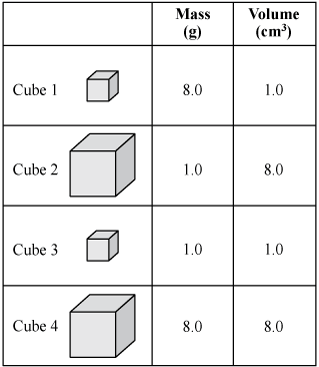the smallest unit of life
Cell
Carbon, Hydrogen, Helium, Oxygen, and Nitrogen are examples of….
ELEMENTS
What is Mass Communication
It’s the communication of information to many people at once.
Conditions of the atmosphere during a short period of time
Weather
Includes the crust and the uppermost portion of the mantle. Cracked into pieces called tectonic plates that float on the asthenosphere. - What is the term for this?
Lithosphere
name of the diagram that is used to predict and outcome of a particular cross or breeding experiment
Punnet Square
The smallest unit of an element is….
ATOM
Which is a conductor, Wood, Metal, aggregate, Plastic
Metal
The collision of the India Plate with the Eurasian Plate, created the Himalaya Mountains. What Boundary is it?
Convergent
Organize the terms from least complex to most complex:
Tissue, organs system, Organism, Organs, cell
1. Cell
2.Tissue
3. Organs
4. Organ system
5. Organism
Part of the plant cell that stores water for the cell
Vacuole
Mass divided by volume is the formula for…
DENSITY
What is the difference between tension and torsion?
Tension is a stretching or pulling force. Torsion is a twisting force.
A region where the atmospheric pressure at the surface of the planet is greater than its surrounding environment.
High Pressure
Name one of the hand tools that fasten nuts and bolts
Wrench or pliers
What are the two organelles found ONLY in plant cells
Cell Wall: Gives plant support and structure
Chloroplast: contains chlorophyll which the plants use for photosynthesis
Burning, Rusting, Cooking, Tarnishing, are examples of…
Chemical Change
Explain what is the function of Framing in a structure
Provides structure and support like a skeleton
Which causes glacial moraines to form?Weathering, Erosion, deposition
deposition
What creates tides?
Pull of the moon’s gravity)
What are the 3 types of symbiotic relationships? Explain each one
Mutualism: Both species benefit
Commensalism: One species benefits, the other is neither harmed nor benefited
Parasitism: One species (the parasite) benefits and the other (the host) is harmed
The table below shows the masses and volumes of four cubes made of different materials.

Which cube has the greatest density? and why?
A.cube 1
B.cube 2
C.cube 3
D.cube 4
cube 1. Because its density is 8g/cm3
Name 2 steps in the Engineering Design Process.
Possible Answers: Identify the Problem, Research the Need or Problem, Develop Possible Solutions, Select the Best Possible Solution(s), Construct a prototype, Test and Evaluate the Solution(s), Communicate the Solutions, Redesign
Put these terms in order to complete the Rock cycle: (starting from magma): magma, sedimentary rock, igneous rock, metamorphic rock, volcanic eruption, sediment
1. Magma
2. Volcanic eruption
3. Igneous Rock
4. Sediment
5. Sedimentary Rock
6. Metamorphic rock
Name all the steps in the water cycle. (6 steps)
1. Evaporation 2. Condensation 3. Winds 4. Precipitation 5. Runoff 6. Collection